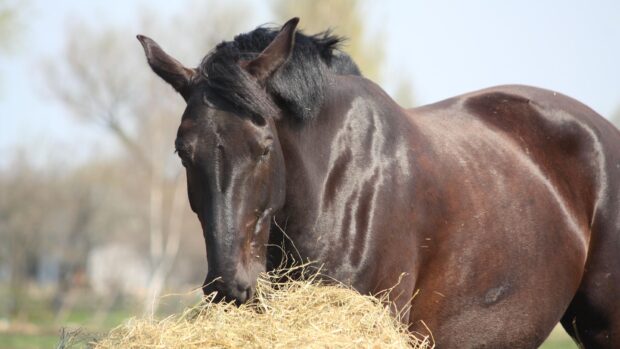There is no getting round the fact that grass is the most natural food for horses, and pure dried grass is more than just another version of chaff.
It is highly palatable, has nothing added and, importantly, is dust-free. With a higher feed value than fresh grass, which is around 90% water, it can be used to either supplement or replace hard feed.
Harvested between April and October on a four-week rotation, the grass is cut by a mower, then dried gently on a flat bed at up to 100øC.
You may find fragments of shattered leaf in the end product, but this should not be confused with dust, which is extracted during production. By the time the grass is baled into 20kg units, it is 95% dry and retains its green colour until exposed to light, when it turns pale. Once the plastic bale is opened, the product will not deteriorate provided it is kept cool and dry.
Due to the way pure dried grass is digested in the hind gut, energy is made available to the horse over a longperiod, so it is ideal for all equines, from ponies to hunters and eventers to endurance horses.
With a 3% natural sugar content and a 2:1 calcium:phosphorous ratio, it is nutritious and suitable for both low forage and high starch diets. Morethan a “chop”, it has a high feed value and can replace part of the concentrate feed for horses in hard work, or most of the concentrate feed for others.


